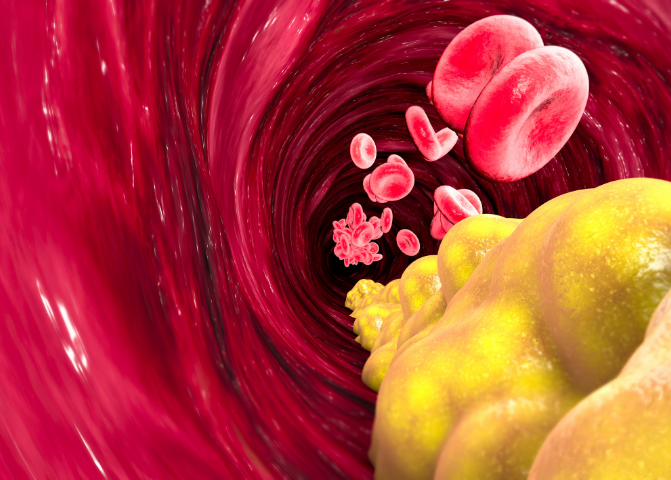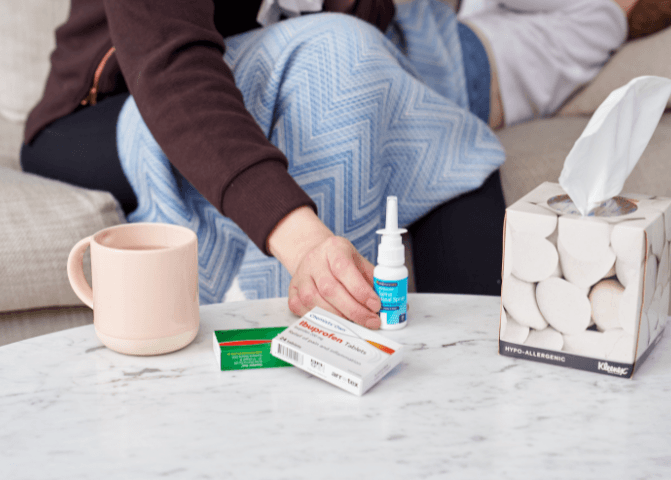20/10/2021
Cholesterol – An Essential Guide
Table of Contents
- What is Cholesterol?
- How is Cholesterol Measured?
- What Are Normal Cholesterol Levels?
- What Causes High Cholesterol Levels?
- Why is It Important to Lower Blood Cholesterol?
- How to Lower Cholesterol Levels?
- Which Foods Lower Cholesterol Levels?
- Exercises for Lowering Cholesterol Levels
- Alcohol Consumption and Cholesterol Levels
- Which Medications Lower Cholesterol?
- Bibliography
Cholesterol – what is it and how does it affect our bodies? Read on to learn more about healthy cholesterol levels, causes of high cholesterol and what you can do to lower it.
Cholesterol is essential for the normal functioning of the human body as it helps maintain the integrity of cell membranes and is involved in many other bodily functions 1. However, it is important that its levels are maintained within normal ranges as an increase in its levels can cause health complications including heart disease.
What is Cholesterol?
Cholesterol is a fatty substance found in the blood and all cells. It is necessary for the normal functioning of several organs in the body. It is also involved in the synthesis of hormones. Cholesterol comes from the food that we eat and is also synthesized in the liver from its building block chemicals. Once synthesised or absorbed from the gut, it is transported to the site where it is needed by special proteins called lipoproteins. There are certain types of cholesterol in the body 2
- Low-Density Lipoproteins – LDL (also known as ‘Bad Cholesterol’)
- High-Density Lipoproteins – HDL (also known as ‘Good Cholesterol’)
- Very low-density lipoproteins that carry Triglycerides
Combined, the levels of these cholesterol types are known as ‘total cholesterol’.
LDL is present in greater amounts and if lipid levels in the blood are high, this cholesterol can get deposited in the wall of arteries. As a result, the walls of arteries get hardened and clogged, and the whole process is termed atherosclerosis. It can lead to cardiovascular events including heart attack. To prevent a rise in LDL levels, the body transports it to the liver and then it is excreted from the body. 3

How is cholesterol measured?
Cholesterol levels are tested using blood samples. It is advisable to fast overnight and give the sample in the morning. The site from which blood is to be withdrawn is cleaned using an antiseptic, a tourniquet is wrapped proximally, and the sample is collected by inserting a needle into the vein. The needle is then removed and emptied into a vial. The site where the vein was punctured is covered by a bandage.
The whole process takes only a few minutes and is almost painless.
No specific set of precautions has to be followed after the test. You should eat something if you have been fasting before the submission of the sample and resume your daily activities.
What are normal cholesterol levels?
Cholesterol levels in the body are measured using different units. In Australia, the units commonly used are millimole per litre (mmol/L). Listed below are the cut off values for cholesterol levels in the body
- Total Cholesterol should be between – 3.9 to 5.5 mmol/L
- HDL levels should between – 0.9 to 2.1 mmol/L
- LDL levels should be between -1.7 to 3.5 mmol/L
- Triglycerides levels should be between – 0.5 to 1.7 mmol/L
What causes high cholesterol levels?
High cholesterol levels can be caused by several factors.
The most important ones are
Genetics
People with a family history are much more prone to have deranged lipid profiles than those with no significant family history.
Unhealthy lifestyle
Eating oily food, not exercising, and smoking are some activities that increase the risk of deranged blood cholesterol levels. The lipid profile of obese individuals tends to be higher than lean individuals. Increasing age is a general risk factor, cholesterol levels start rising after the age of 20. 4
Medical conditions
Patients with chronic kidney disease, diabetes, HIV, Systemic Lupus Erythematosus and Hypothyroidism are generally at an increased risk of having high cholesterol levels. 5
Medications
Medications used for acne, high blood pressure, HIV, irregular heart rhythms and those used after organ transplantation can result in elevated cholesterol levels. Anti-cancer drugs have the same effect.
Why is it important to lower blood cholesterol?
If your cholesterol levels are high, you are at a greater risk of suffering from a cardiovascular event. This is because when LDL levels rise in the blood, a process known as atherosclerosis starts. Lipid deposition begins in the wall of the blood vessels, plaque forms and then it gets hardened. This results in narrowing of the arteries and the blood flow to critical organs such as the heart decreases. Oxygen supply to the heart tissues is compromised and the cells start to suffer. This can result in cardiovascular events including heart attack.
Given the grave consequences, it is extremely important to have a healthy lifestyle and keep cholesterol levels in check.
How to lower cholesterol levels?
Even if your cholesterol levels have increased, they can be lowered by adapting to a healthier lifestyle and making some modifications in the daily routine.
Listed below are some ways to lower cholesterol levels
Diet modification
Changes in the can help lower cholesterol levels. This can be done by reducing the intake of saturated fats and eliminating the use of trans fats. Adding soluble fibres and whey protein to the diet further helps in reducing cholesterol levels 6
It is discussed in detail below.

Physical activity
Moderate physical activity can result in an increase in HDL levels in the body. After consulting your doctor, you can start an exercise regimen according to your health status. Doing a workout on alternate days of the week is a good option and so is doing a brisk walk daily or cycling or playing a game that requires physical activity.
Weight loss
This is especially important for people who have a history of cardiovascular disease. Excess body fat contributes to high cholesterol levels. Some dietary modifications and exercise can help you in shedding those extra pounds. Switch to a healthier diet that is low in fat content and leaves you in a caloric deficit. Increase your physical activity and do not get tempted by cravings for unhealthy foods. Have a read of our comprehensive guide to weight loss.
Smoking
Quitting smoking improves levels of HDL cholesterol. There are several benefits of quitting smoking. Cigarette smoke causes narrowing of the blood vessels and blood flow to the organs is significantly reduced. Within 20 minutes of quitting smoking the blood pressure and heart rate return back to normal. After 3 months, the lung function and circulation improve. Within a year of quitting the risk of developing heart disease is halved as compared to a smoker. 7
Alcohol
Drinking alcohol at safe levels has proven to increase HDL levels but the benefits of alcohol consumption are very less compared to the risks it comes with. It is better to drink less if not completely stop drinking alcohol.
Which foods lower cholesterol levels?
You can make the following changes in your diet to lower your cholesterol levels:
No Trans Fats
Trans fats are present in all bakery products like cakes, cookies, margarine etc. They are mentioned on the label as “Partially Hydrogenated Vegetable Oil”. They raise the overall cholesterol levels and should be avoided entirely.
Reduce saturated fats
These are present in red meat and full-fat dairy products. These also raise the total cholesterol levels and lead to an increase in LDL levels. Their consumption should be limited.
Increase soluble fibre
Soluble fibre reduces cholesterol absorption in the bloodstream. It should be incorporated into the diet. It is found in foods such as kidney beans, Brussels sprouts, apples etc.
Intake of Whey protein
Studies have shown that whey protein found in dairy products has many health benefits. It lowers the total cholesterol as well as the LDL levels. It also leads to a decrease in blood pressure.
Consume omega 3 fatty acids
Omega 3 fatty acids do not have any effect on the LDL Cholesterol Levels but they do have other benefits. They improve cardiovascular health by reducing blood pressure. Salmon, flaxseeds, mackerel and walnuts etc are rich in omega -3 fatty acids.
Exercises for lowering cholesterol levels
It is a good idea to consult your doctor before starting any exercise regime.
Moderate physical activity helps increase the levels of HDL cholesterol in the body. You can do brisk walk daily, do cycling or play any sport that you like regularly. Working out 30 minutes at least 5 times a week or doing vigorous aerobics for 20 minutes 3 times a week is a good idea too.
Alcohol consumption and cholesterol levels
Some studies have shown that consuming alcohol in moderation leads to increased levels of HDL Cholesterol. However, this is not a reason to drink alcohol as it still is a risk for many other diseases.
If you consume alcohol, do so in moderation. For healthy adult women, it means 1 drink per day for women of all ages. For men aged 65 and younger, it amounts to 2 drinks a day, whereas for men aged 65 or more it is 1 drink per day.
Which medications lower cholesterol?
Many medications are used to lower cholesterol levels. Talk to an online doctor about options.
Bibliography
- Muralidharan, J., Papandreou, C., Soria-Florido, M. T.,Sala-Vila, A., Blanchart, G., Estruch, R.,Martínez-González, M. A., Corella, D., Ros, E.,Ruiz-Canela, M., Fito, M., Salas-Salvadó, J., & Bulló, M.(2021). Cross-Sectional Associations Between HDL Structure or Function, Cell Membrane Fatty Acid Composition, and Inflammation in Elderly Adults. The Journal of Nutrition. https://doi.org/10.1093/jn/nxab362
- Steinmetz, J. (n.d.). Cholesterol, LDL and HDL. In The SAGE Encyclopedia of Food Issues. https://sk.sagepub.com/reference/the-sage-encyclopedia-of-food-issues/i3238.xml
- Thakkar, H., Vincent, V., Roy, A., Gautam, A. K., & Singh, A. (2020). Association of fatty acid profile of HDL phospholipids and HDL functions in patients with acute coronary syndrome. In Atherosclerosis (Vol. 315, p. E152).https://doi.org/10.1016/j.atherosclerosis.2020.10.470
- Flegal, K. M. (2000). Obesity, Overweight, Hypertension, and High Blood Cholesterol: The Importance of Age. In Obesity Research (Vol. 8, Issue 9, pp. 676–677). https://doi.org/10.1038/oby.2000.87
- Fox, C. S., & Muntner, P. (2008). Trends in Diabetes, High Cholesterol, and Hypertension in Chronic Kidney Disease Among U.S. Adults: 1988-1994 to 1999-2004. In Diabetes Care (Vol. 31, Issue 7, pp. 1337–1342). https://doi.org/10.2337/dc07-2348
- Jayakumari, N., & Kurup, P. A. (1979). Dietary fibre and cholesterol metabolism in rats fed a high cholesterol diet. In Atherosclerosis (Vol. 33, Issue 1, pp. 41–47). https://doi.org/10.1016/0021-9150(79)90196-5
- Beson, L. R., & Air Force Wright Aeronautical Laboratories. (1992). Relation Between Cigarette Smoking, Body Fat Distribution and Density of Lipoprotein Cholesterol in Women.
- Statins, Cholesterol, and Coronary Heart Disease. (2007). In The Illusion of Certainty (pp. 93–103). https://doi.org/10.1007/978-0-387-48572-0_9
- Qiu, D. N., Shang, Q., Sun, D. Y., Ding, W. Q., Luo, Z. G., Chen, J., Jiang, W. R., Huang, J. P., & Jiang, X. Y. (2017). Cholestyramine alters bile acid amounts and the expression of cholesterol-related genes in rabbit intestinal and hepatic tissues. Journal of Digestive Diseases, 18(2), 107–114.
Recommended reading
Search for a specific topic or filter by categories to find information on what you need to know on the full Medmate Journal

What to Do When You’re Unwell at Home: A Practical Guide
Feeling unwell at home can be frustrating—especially when you can’t get in to see a doctor or you’re too unwell to leave the house. Whether it’s symptoms of a virus,…

